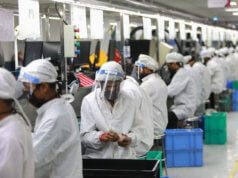 Like every other market, the Indian commercial vehicles industry is unique in terms of regulatory specifications, customer requirements and actual usage challenges. Subhendu Ghosh, Vice President – Global Engineering & Design, Tata Technologies Ltd, writes about certain unique requirements and constraints which need to be addressed while designing commercial vehicles for Indian roads.Higher GDP growth, rapid urbanization, boom in the infrastructure and construction projects coupled with better road network fuelled the rapid growth of Heavy commercial vehicle industry in India. Since 2000-01 there is a steady growth in HCV segment barring a small dip in 2008-09. Today, we have wide range of commercial vehicles available in the Indian market. The domestic market is also seeing the entry of global OEMs from the West. Chinese manufacturers are also not behind. Chinese auto giant Foton has shown interest to have their pie in this market by putting a plant at Chakan near Pune. As per the E&Y report Indian commercial vehicles sales to hit 1.6 million units by 2016-17 and Heavy commercial vehicles will have a significant portion of this volume. Today, Indian HCV industry has achieved a significant growth and bright future is ahead, but we have a long way to go before we could reach the levels of American and European manufacturers.Just like any other geography, India has also got certain unique requirements and constraints which need to be addressed while designing the vehicles for Indian roads. Two major factors which drive the engineering of Heavy Commercial Vehicles in India are regulations, government enforced policies and customer requirements. Road conditions, capacity and network in India are among the major challenges for HCV industry. As per the NHDP factsheet, 65 per cent of the freight and 80 per cent of the passenger traffic is carried by road in India.
Like every other market, the Indian commercial vehicles industry is unique in terms of regulatory specifications, customer requirements and actual usage challenges. Subhendu Ghosh, Vice President – Global Engineering & Design, Tata Technologies Ltd, writes about certain unique requirements and constraints which need to be addressed while designing commercial vehicles for Indian roads.Higher GDP growth, rapid urbanization, boom in the infrastructure and construction projects coupled with better road network fuelled the rapid growth of Heavy commercial vehicle industry in India. Since 2000-01 there is a steady growth in HCV segment barring a small dip in 2008-09. Today, we have wide range of commercial vehicles available in the Indian market. The domestic market is also seeing the entry of global OEMs from the West. Chinese manufacturers are also not behind. Chinese auto giant Foton has shown interest to have their pie in this market by putting a plant at Chakan near Pune. As per the E&Y report Indian commercial vehicles sales to hit 1.6 million units by 2016-17 and Heavy commercial vehicles will have a significant portion of this volume. Today, Indian HCV industry has achieved a significant growth and bright future is ahead, but we have a long way to go before we could reach the levels of American and European manufacturers.Just like any other geography, India has also got certain unique requirements and constraints which need to be addressed while designing the vehicles for Indian roads. Two major factors which drive the engineering of Heavy Commercial Vehicles in India are regulations, government enforced policies and customer requirements. Road conditions, capacity and network in India are among the major challenges for HCV industry. As per the NHDP factsheet, 65 per cent of the freight and 80 per cent of the passenger traffic is carried by road in India.
From the regulatory point of view, India does not have an Auto fuel policy implemented and emission standard roadmap is also under discussion. Unlike other developing countries (China and Russia) India is slow in implementing the stringent emission norms. Quality of fuel available in Indian market is also not consistent and malpractices like fuel adulterations are very common. All these things make it difficult to engineer a vehicle for Indian roads.
From the customer point of view two most important parameters are fuel efficiency and low initial cost. Few years back driver safety and comfort were not so important, but due to stringent safety norms and introduction of vehicles from global OEMs forcing Indian manufacturers to make products which are safer and equipped with better features.
Indian HCV market is highly fragmented due to its unique ownership pattern. As per the report of Indian Foundation of Transport Research and Training, 80 per cent of truck operators are small, owning less than 10 trucks and among these small operators, a large number of owner-drivers transport goods with a single truck. Only 10 per cent of Indian truck operators own a fleet more than 25 trucks and only 1 to 2 per cent have 200-1000 trucks. This ownership pattern limits the use of advanced fleet management tools and other value added services. Owners are more interested in return on investment rather than total cost of ownership.
Unlike the passenger cars where the design and manufacturing is influenced by the use of high end technologies, Indian trucks are technically unsophisticated due to poor road conditions and lower customer expectations. HCV industry is always challenged to use advanced technologies due to high cost and less volume.
To summarize, in future, global manufactures will go for more localisation to drive down the cost, while local manufacturer will build competency through R&D, supplier collaboration and outsourcing. Future product developments will find bigger role for supplier and engineering service providers to improve the overall quality, manufacturing flexibility and provide skilled manpower.










